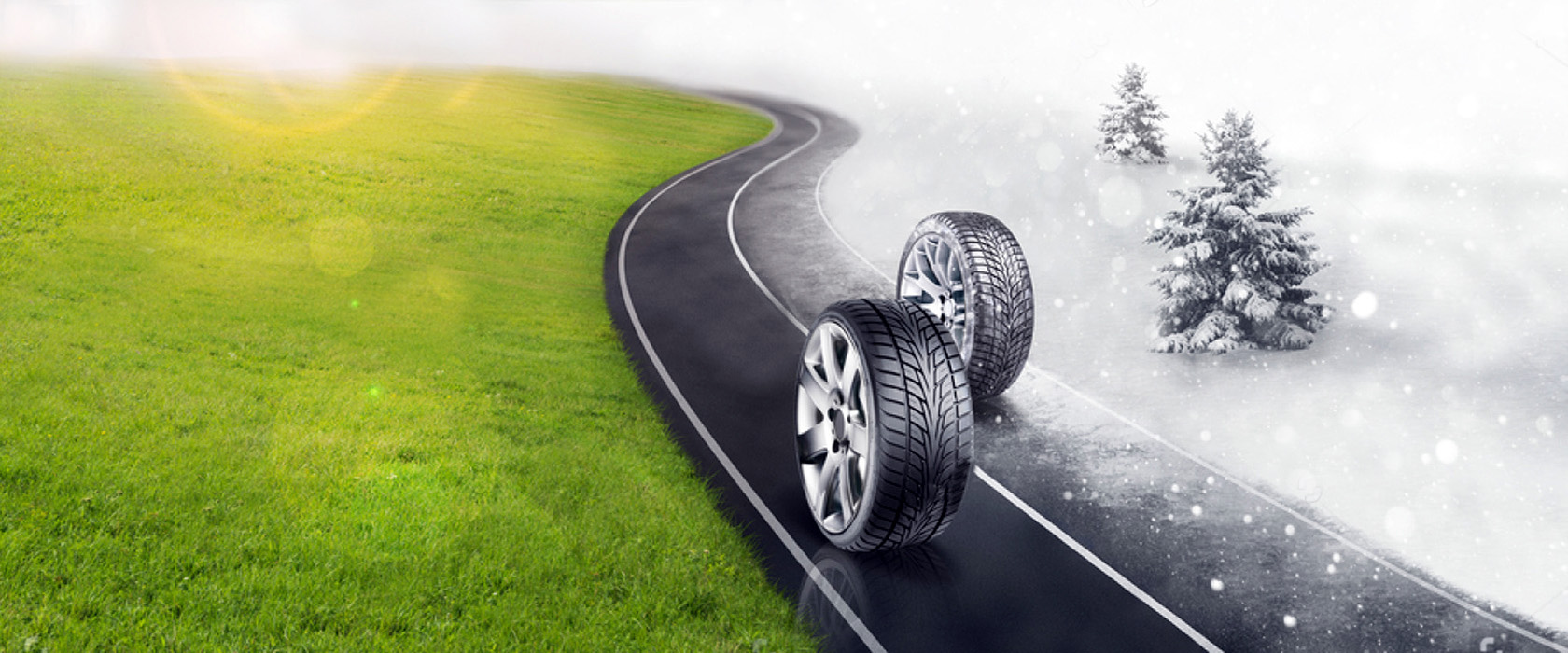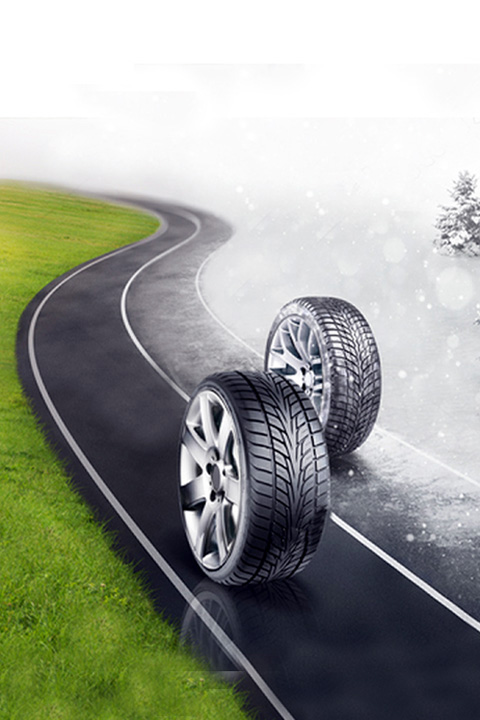MO tires
Tires are one of the most important parts of your vehicle, the only one that comes into contact with the road. Every movement of the driver is converted into a change in the movement of the car through the wheels and tires.
Car tires affect active and passive safety, what we call grip and braking. No engine can work perfectly without the right tires. The better and in better condition our tires are, the more traction the car has, the more immediately it slows down, the faster it can take a turn safely.
Tire categories based on season of use
Summer tires: Summer tires are the ones we use during the warm 6 months of the year from April to October and are designed for use on dry roads. Summer tires have more grip and a higher speed index because they have fewer grooves in the tread. Provided they are used on a dry road, summer tires offer reduced fuel consumption, less noise and better grip than any other type of tyre.
All-season tires: All-season tires offer quite satisfactory performance, grip and safety in all conditions without, however, having an advantage anywhere.
Winter tires: These tires are suitable for driving in areas with severe winters, as they perform better in low temperatures and have a suitable tread pattern.
Snow tires: Snow tires are intended for use in snow or mud. Their main feature is the strongly grooved surface, which offers traction on soft substrates.
4×4 and SUV tyres: 4×4 vehicles and SUVs have different requirements and the tires should offer traction on gravel, sand, dirt and mud. 100% clay should be used with great care on asphalt, due to low adhesion.
Run Flat: Run Flat tires have a special design that allows them to maintain their shape and perform their function even if the tire pressure is reduced.
Can the inflation kit replace the spare?
The inflation kit fills the tire with foam or air, allowing the driver to drive to the nearest repair point without putting on the spare. Larger holes, however, cannot be repaired with the kit and the spare is essential.
How long do tires last?
In theory, a set of tires should last for 25,000-30,000 kilometers. However, the life of the tires is determined by the driving style, the condition of the roads, whether the vehicle is kept in a closed parking space, If for example we drive with deflated tires, their wear increases dramatically. If we take the turns dynamically, the same thing happens..
Soft tires offer performance, but tires wear more easily. Hard tires last longer and are better for city driving.
Tires should be replaced every five years even if they have not completed 25 thousand kilometers, because solar radiation affects the rubber and loses its properties.
How can we check tire wear?
Side wear: When the side sections are more worn than the center it means that we drive for long periods without the correct pressure in our tires. Simply put, the tires are underinflated for a long time. Another reason this can happen is that we are cornering at high speed or there is a mismatch between the width of the rim and the width of the tire.
Center wear: When the center of the tread is more worn than the sides, then we drive for long periods with higher pressure on our tires than we should.
One sided wear: When the inside of the tire is more worn than the outside or vice versa, the camber angle of the suspension is not set correctly. It is something that needs immediate repair by a specialist tire repair shop.
Spot wear: Spot wear is caused by faulty suspension, faulty brakes, hard braking, sudden starts or a mismatch between the rim and the tyre.
Instructions for proper maintenance
- We proceed to Balancing and Alignment when we feel vibrations in the steering wheel or when the car “pulls” to the left or right (this “pulling” may simply mean that the tire pressure is not correct)
- We change the tires in groups of 4 in order to have the same degree of wear on all of them. In the event that we are forced to change only the two tires, we make sure to place them on the same axle and that it is the axle that gives movement to the vehicle. Nevertheless, in order to take advantage of 100% of the car’s potential and to be safe, buying four tires is a one-way street.
- We are careful about the contact with the pavements.
- We drive at low speed through the city and carefully avoid potholes.
Tire categories according to tread pattern
- Symmetrical: It is designed for small passenger cars and routes within the city. These tires have increased service life, excellent grip and high comfort, but lag behind on wet roads.
- Asymmetric: These tires are designed for cars with high horsepower and high performance. They are less economical and have a relatively short service life, but have a high resistance to hydroplaning.
- Directional: These tires combine reliability at high speeds and very good grip on wet roads, but are sensitive to bumps because they have soft sidewalls.
Be careful with new tires
The new tires have small characteristic pieces of rubber “hair” on their surface that reduce the tire’s grip on the road. Επίσης τα καινούρια ελαστικά έχουν μια ειδική επίστρωση που τα κάνει ολισθηρά. Therefore, we drive carefully for the first thousand kilometers until the “nails” and the special coating are gone from the friction of the tire with the asphalt.
Tips for choosing tires
- There is no point in changing tires without being sure that our vehicle’s suspension is working perfectly.
- Used tires are an economical solution but the risk is high (certainly not as high as if we stick with worn tires).
- Consult the user manual for the manufacturer’s specifications. The manufacturer’s dimensions are always the safest choice because they are tested.
- Each option has pros and cons. We have to find a balance between ride quality, fuel consumption, noise, durability of the tire, price and of course the use we want them for (city traffic at low speeds, frequent trips, asphalt, dirt, etc.).






